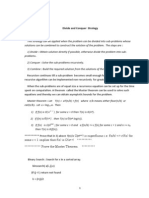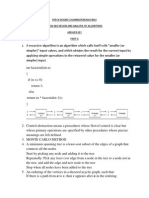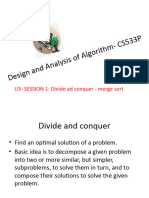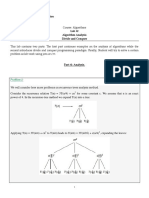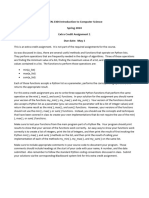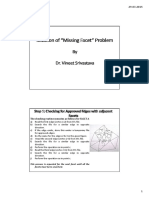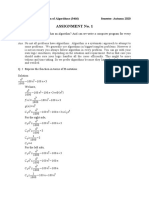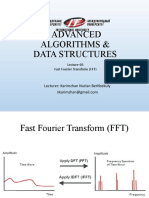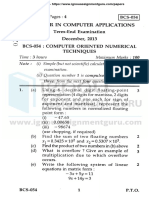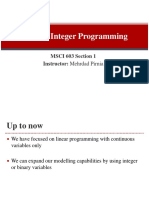0% found this document useful (0 votes)
14 views10 pagesDiscrete Project
The project focuses on analyzing five problems using the Divide and Conquer strategy, detailing their recursive frameworks, recurrence relations, and time complexities through the Master Theorem. It includes implementations in Python for algorithms like Merge Sort, Binary Search, Quick Sort, Strassen’s Matrix Multiplication, and Karatsuba’s Multiplication. The document also outlines the mathematical solutions and applications of these algorithms in real-world scenarios.
Uploaded by
mehakkumar8168Copyright
© © All Rights Reserved
We take content rights seriously. If you suspect this is your content, claim it here.
Available Formats
Download as DOCX, PDF, TXT or read online on Scribd
0% found this document useful (0 votes)
14 views10 pagesDiscrete Project
The project focuses on analyzing five problems using the Divide and Conquer strategy, detailing their recursive frameworks, recurrence relations, and time complexities through the Master Theorem. It includes implementations in Python for algorithms like Merge Sort, Binary Search, Quick Sort, Strassen’s Matrix Multiplication, and Karatsuba’s Multiplication. The document also outlines the mathematical solutions and applications of these algorithms in real-world scenarios.
Uploaded by
mehakkumar8168Copyright
© © All Rights Reserved
We take content rights seriously. If you suspect this is your content, claim it here.
Available Formats
Download as DOCX, PDF, TXT or read online on Scribd
/ 10





